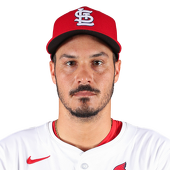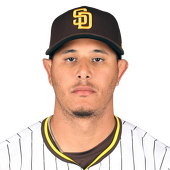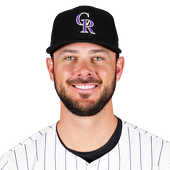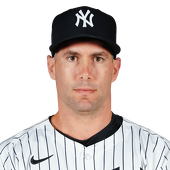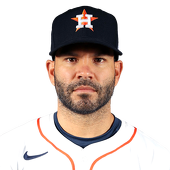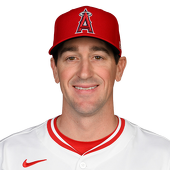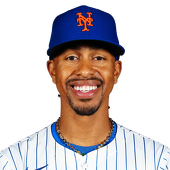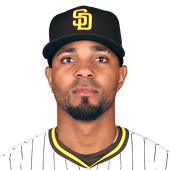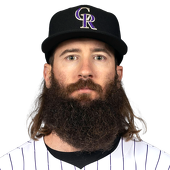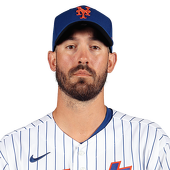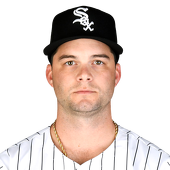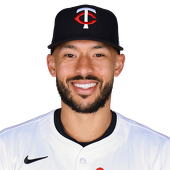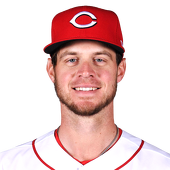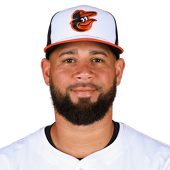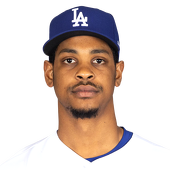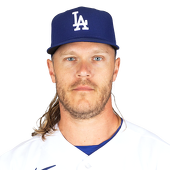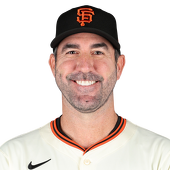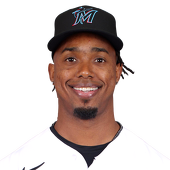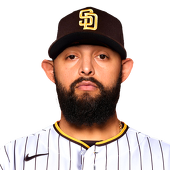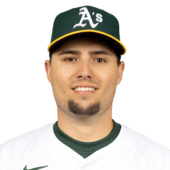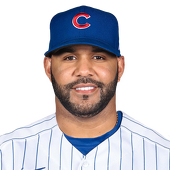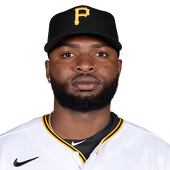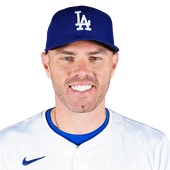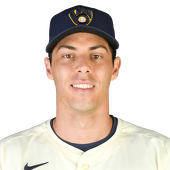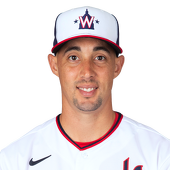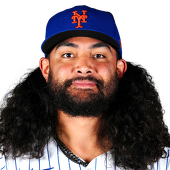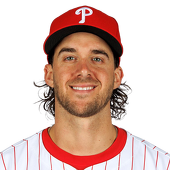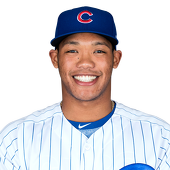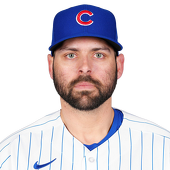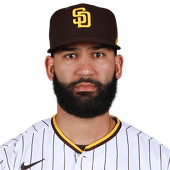Fantasy Baseball: Trea Turner leads top 50 keepers for 2017, with Yoan Moncada, Kris Bryant and Gary Sanchez not … – CBSSports.com
Bear with me, OK?
The problem with generic keeper rankings is that they can’t possibly be all things to all people. So many different keeper league variations exist — and with such a wide range of consequences — that I kind of just have to pick one and go with it.
Leagues that allow every owner to keep a set number of players with no cost attached really shouldn’t throw you for a loop. You just keep the best of what you have, maybe accounting some for age if the keeper count is on the higher side. So I’m more interested in the leagues that require you to forfeit something, be it a draft pick or auction dollars, relative to what you initially paid for the player. Ones that reward value, in other words, and I think it’s all the more interesting when the turnover rate is low, meaning every team is capable of keeping a bunch of players for a long time.
Typically, these leagues raise the keeper cost every year so that the discount begins to dwindle over time and eventually, for all but the very best players, the cost is no longer worth it. So if you’ve owned one of these players for several years and the price has escalated to the point of being untenable, well, that’s for you to figure out. Again, I can’t account for every possible scenario. But I can use last year’s draft data as a starting point, giving you a handy reference if this is your first opportunity to keep said player.
It’s important to understand the methodology or else the whole list seems asinine. For every player, I listed the round where he was drafted last year (average draft position or ADP) for both Head-and-Head and Rotisserie, assuming a 12-team league. I also listed his age as of opening day 2017 because, again, I’m thinking lots of players for a long time. You’d hate to quit on a franchise-shaping talent too early. Then, I just worked my way down the list, asking myself if I’d be willing to give up Player A at his cost for Player B at his cost and, if so, flipping them.
Simple, right? Everyone can think along with me that way. Not everyone will agree with the order, I’m sure, but keep in mind these are the top 50 keepers. That’s a pretty low number, taking every team into consideration, so the chances of any of these players getting thrown back at these costs is slim. But if you do face an impossible choice, well, hopefully it’s a little more possible now.
And if you don’t play in this type of keeper league — or a keeper league at all — there’s still plenty of insight to glean from this list. You’ll just need to filter it appropriately.
Turner was a top prospect, but he wasn’t the prospect everyone was looking at early last year, which makes for a heavy discount for what appears to be a first-round talent.
Since he broke in five years ago, Trout has been the top pick whenever we weren’t outsmarting ourselves, so if you throw him back, you’re not getting him back. Don’t you outsmart yourself now.
It’s not the steepest of discounts, but it’s better than you’ll do with the pick you give up. You could burn through 100 prospects before wrangling a first round-caliber player, so when you get one, hold on tight.
Any legitimate first-round player is worth keeping with a first-round pick since you can’t be sure what caliber of player will be available in a keeper-diminished first round. You wouldn’t want to forfeit all the years of first-round production 25-year-old Arenado has ahead of him at Coors Field.
Sinking a first-round pick into Harper feels like a concession after the season he just had, but he’s only a year removed from being the best player in Fantasy Baseball. Cutting him loose at age 24 is a decision that could haunt you forever.
The prospect who made the most noise prior to his promotion last year turned it on over his final 163 at-bats in the majors, hitting .313 with eight home runs and a .931 OPS. Scoring that kind of talent with a late-round pick is a franchise-altering move.
Tying your first-round pick to a pitcher is generally unwise, but when he’s one as historically dominant as Kershaw — the best pitcher in baseball with a 1.88 ERA, 0.86 WHIP and 10.4 strikeouts per nine innings over the last four seasons — how can you let him go?
It’d be even more of a slam dunk if you could trust him to retain shortstop eligibility, but the kind of numbers Machado has put up through age 24 has him on a Hall of Fame track. These are the kind of players you build around, so no cost is too high.
Drafting a stud pitcher fresh off Tommy John surgery, when his value is suppressed, always makes for a favorable keeper scenario, and Darvish did his part by picking up where he left off prior to the injury. That said, if you still have him at his pre-Tommy John price, he probably doesn’t even crack this list.
Being proven counts for something, so even though Moncada is the best prospect in baseball, we’ve seen that title-holder underwhelm often enough — from Matt Moore to Jurickson Profar to Byron Buxton — for me to exercise some caution here. Still, Moncada is the most overwhelming minor-league talent since the days of Harper and Trout.
Wait, a 22-year-old rookie shortstop finished third in NL MVP voting? Even if this ADP buys you only a one- or two-year discount in your league, Seager is poised to become your cornerstone.
If your league escalates keeper cost from year to year, Bryant isn’t far from costing you a first-round pick, but the reigning NL MVP has a trustworthy pedigree and is someone you build around at age 25.
Goldschmidt’s 30th birthday is rapidly approaching, but power-hitting corner infielders with exemplary plate discipline typically age well. He’s a threat to be the most productive player in Fantasy year after year.
Generally, you wouldn’t want so many of your resources tied up in a hitter whose power potential is in question, but other contributions have made Altuve consistently studly through age 26. And if Trout, Betts, Arenado, Harper, Kershaw, Machado, Bryant and Goldschmidt are already being kept, what else are you going to do with your first-round pick?
Maybe he’s not 2.13-ERA good, but Hendricks has somehow managed to blow away our expectations three years in a row and couldn’t ask for a better situation in terms of winning games. Even his loudest detractors would like him at this price.
Lindor may not have much room to improve from here, but he presumably has many years of this type of production ahead of him. Finding a franchise shortstop is victory enough without a discount.
The same goes for Bogaerts, though I do think he has a chance of developing into more of a power hitter. He’s a spot behind Lindor because there were some unsustainable aspects to his 2016, which may have contributed to his lackluster second half. But again, franchise shortstop.
He could get traded out of Colorado before you mine all the value out of his 2016 ADP, but for now, just appreciate that last year’s seventh-best per-game hitter will be only your fifth-costliest player (or whatever pick you’d be giving up).
As with Hendricks, the skepticism is well-founded, but in a keeper league especially, you can’t afford to outsmart yourself. Cutting loose a reigning Cy Young winner for an extra late-round pick would be doing just that.
Benintendi is at least partially validated, having hit .295 in his first taste of the big leagues, but he’ll need to add power to live up to those Andrew McCutchen comparisons. Still, now’s the time to buy in to a relatively high-probability upside play.
This one kills me because Correa’s 2016 performance doesn’t justify his keeper cost, but remember, we’re thinking big picture here. Could you throw him back and draft him in the second round instead of the first? Probably not in a league that values longevity. And a worse-than-expected age-21 season doesn’t change his long-term projection as a top-five overall player.
Old man Murphy was the MVP candidate out of nowhere last year, but his altered approach and underlying numbers would seem to support the breakthrough. You won’t have too many years to enjoy it, of course, but it’s not every year you stumble upon this big of a discount.
If not for the risk of him bottoming out because of an excessive strikeout rate, Story would rank much higher on this list, but playing half his games at Coors Field gives him a bit of a safety net. If he can’t sustain the home run pace from his rookie season, he may not be worth keeping once his cost climbs past Round 10 or so.
Another semi-reluctant buy-in here since Myers’ breakout 2016 wasn’t the greatest peripherally and followed a couple disappointing seasons, but there’s no arguing the value. I guess all I’m trying to say with Story and Myers is that they’re not franchise cornerstones who you’d keep all the way into the early rounds, but then, how many players are?
Catchers are risky investments long-term, which is why I slot Sanchez behind Story and Myers even though I think he profiles as a better overall hitter. Not like he’s going to sustain that 60-homer pace from a year ago, though.
Swanson is as safe of a prospect as you’ll find, so you should be thrilled to have locked him up with a late-round pick. His peak will be a tricky one to attain, though, since it depends on him doing a little bit of everything, so you shouldn’t bank on him being a franchise shortstop on the level of a Lindor or Bogaerts.
A 20-year-old pitcher is obviously a high-variance player, but early returns for Urias are encouraging, especially the 1.99 ERA over his final 10 appearances (seven starts). There’s a reason he was the first teenager to start a game since Felix Hernandez.
Reyes was the one of last year’s high-profile pitcher call-ups who legitimately dazzled, compiling a 1.57 ERA over 12 appearances with all the strikeouts you’d expect for a prospect of his ilk. Still, the walks make him far from an open-and-shut case.
I’m skeptical Syndergaard will ever exceed a fourth-round price tag, which is about what Madison Bumgarner has had his entire career, but the kind of ratios he has put together at such a young age at least gives him a chance. A guy with best-pitcher-in-baseball potential is worth keeping at face value.
Gotta love the Coors Field safety net. Dahl doesn’t have near the same contact issues as Story and was the better prospect to begin with, so his strong rookie showing, brief as it was, makes him a no-brainer at this price.
Kind of an atypical situation since Verlander’s discount was a product of him underachieving for several seasons, but he was the AL’s best pitcher last season (despite the lack of hardware) and has a Hall of Fame pedigree. Don’t betray your instincts just one year later.
Can I honestly envision a scenario where I don’t keep Segura, who I named last season’s Fantasy MVP for his production relative to his price tag? No, but his price tag was what it was because nobody expected him to do what he did. Just something to keep in mind if you’re forced to deliberate.
Odor will need to have figured out how to take a walk to justify an elite price tag when it gets to that point, but only one other 22-year-old second baseman in history has hit even two-thirds of the 33 home runs Odor hit last year. That’s not a player you want to sell short.
The preeminent SPARP (starting pitcher as relief pitcher) heading into 2017 can be yours for next to nothing, which is an especially big deal in points leagues (where I actually rank him No. 1 at relief pitcher). That bumpy finish shouldn’t even enter your mind with a discount that big.
The power is such a recent addition to Diaz’s game, first showing up in the Arizona Fall League in 2015, that part of me still wonders if his emergence is a mirage. But if it isn’t, given how little he strikes out, he’s a keeper you’ll cherish for a long time.
Speaking of mirages, nobody expected anything from Villar after the Brewers picked him off the scrap-heap in a low-profile trade with the Astros, and judging from his BABIP, he may have some regression coming. But a shortstop who takes walks, hits the ball out of the park and runs like crazy? You can’t afford not to give him another look.
Underlying numbers like exit velocity and his occasionally brilliant plate discipline still portend great things for Polanco, who isn’t bad just this way he is. But he’ll need to continue making strides to stay ahead of the customary cost escalation.
Freeman’s unbelievable second half in which he hit .323 with 18 home runs and a 1.067 OPS took him from about a sixth-round talent to about a third-round talent, and the gains may be legitimate given that he’s in the prime of his career. But even if they’re not, you’re basically getting him at face value, which is never a bad thing.
Full disclosure: I don’t entirely trust Yelich’s 20-homer breakthrough seeing as he needed an elite home run-to-fly ball rate just to achieve that modest total, but his production through age 24 rates well historically. We may not have seen his best yet.
Yet another player whose upside is difficult to ascertain, Sanchez was nonetheless a top-20 starting pitcher last year and offers every incentive to hold on to him with a late round pick, especially since his prospect pedigree suggests he may not have peaked as a strikeout pitcher.
Valuing partial-season numbers over full-season numbers is always a little presumptuous, but for a high-profile prospect just beginning his major-league career, it may well represent growth. Manaea had a 2.44 ERA, 0.99 WHIP and 8.0 strikeouts per nine innings over his final 14 appearances (13 starts) last season.
Want more partial-season numbers? Nola looked like he was on the path to acedom with a 2.65 ERA, 0.99 WHIP and 9.8 strikeouts per nine innings over his first 12 starts, which seemed plausible enough since he was lauded for his polish and pitchability from the day he was drafted. And since he was eventually shut down with a sprained elbow, I’ll give him a pass for his numbers thereafter.
The Nationals were down on Giolito after he unexpectedly struggled with his command last season, but seeing as he closed it out with a 2.17 ERA, 1.10 WHIP and 9.6 strikeouts per nine innings (to 2.4 walks) in seven starts, I’m thinking they overreacted. You have last year’s top pitching prospect for cheap, so you might as well ride it out.
Giolito’s walk rate was nothing compared to Glasnow’s 5.2 per nine innings, but that’s par for the course for him. He still has unhittable stuff, so if pitching coach Ray Searage can tame him, as he has so many other wild stallions, watch out.
Taillon is a more complete pitcher than Giolito or Glasnow at this stage, but he isn’t as strikeout-oriented. He compares more to Nola and may have similar breakout in store, so you’re obviously not letting him go after a strong rookie season.
The high turnover rate and general elasticity of the closer role makes it not so great for mining for keepers, but when one comes up throwing 102 and leading stalwarts like Aroldis Chapman and Kenley Jansen in strikeouts per nine innings, it’s worth getting in on the ground floor.
Snell showed electric stuff as a rookie, but he didn’t laugh at his control issues quite the way Alex Reyes did. Still, with his similar pedigree and keeper cost, the gap between Nos. 28 and 47 is narrower than it looks.
Sometimes high-ceiling players are worth locking in at what could be a discount even if it’s not immediate. The year Russell breaks through with early-round numbers, as his pedigree suggests he could, you’ll be too late.
With a 2.75 ERA, 0.96 WHIP and 10.8 strikeouts per nine innings last season, Herrera has the look of a stud closer for an organization known for generating him. His ascension wasn’t expected heading into the offseason, but if you did have the foresight to roster him, you know have him for cheap, cheap, cheap.
This might seem kind of low for the reigning AL Rookie of the Year, but the way Fulmer’s strikeout rate suffered over the course of the season, dropping to 6.6 per nine innings in the second half, makes me wonder if he tops out as a mid-tier pitcher and not the ace Giolito and Glasnow could become.
Had to squeeze Mazara in here because a top prospect who comes in with minimal fanfare, keeping the price low, and hits 20 homers as a 21-year-old is too promising not to retain in this format even if some of his peripherals make him a liability for the time being.




